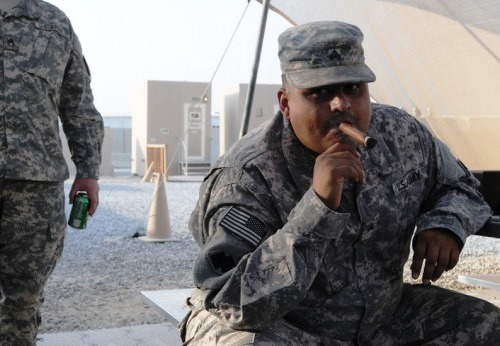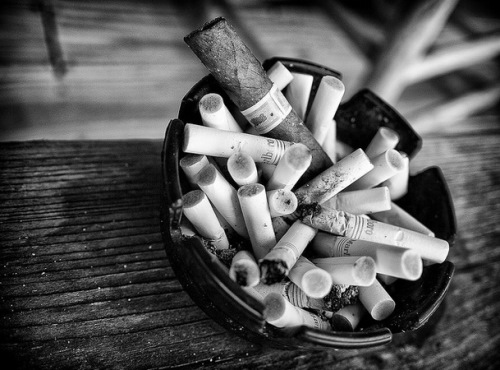Cigar Review: 1502 Ruby Lancero
1 Jun 2015
Back in 2012, I wrote a less-than-flattering review of the 1502 Emerald Torpedo, calling the cigar slightly bitter and underwhelming in the flavor department. Not only have I not tried another Emerald since, but—up until recently—I also haven’t smoked any of the other blends from 1502. Apparently that was a mistake.
 The House of Emilio-distributed 1502 brand, which is owned by Enrique Sánchez Icaza’s Global Premium Cigars, has several other lines worthy of consideration. Among them are 1502 Black Gold, 1502 Nicaragua, and 1502 Ruby. Each pays homage to the year Christopher Columbus discovered Nicaragua.
The House of Emilio-distributed 1502 brand, which is owned by Enrique Sánchez Icaza’s Global Premium Cigars, has several other lines worthy of consideration. Among them are 1502 Black Gold, 1502 Nicaragua, and 1502 Ruby. Each pays homage to the year Christopher Columbus discovered Nicaragua.
The 1502 Ruby is marketed as a medium-plus creation that ranks between the Emerald and Black Gold in terms of power. It features an Ecuadorian wrapper around tobaccos from the Jalapa and EstelÃ. Seven box-pressed sizes are available, each made at the Plasencia Cigars S.A. factory: Robusto (5 x 50), Toro (6 x 50), Torpedo (6.5 x 52), Perfecto (6.1 x 50), Conquistador (6 x 56), Lancero (7 x 38), and Corona (5.5 x 42).
The Lancero costs about $8 and has a dry, slightly lumpy exterior with only the thinnest veins and tight seams. The handsome specimen is adorned with a traditional band, a well-executed cap, and a semi-closed foot. Pre-light notes include sweet hay and cocoa. A simple V-cut is all that’s needed to reveal a cold draw that’s easy, especially for a lancero.
Right out of the gate the 1502 Ruby boasts a well-balanced, tasty profile with hints of dry wood, red pepper, sweet cream, and mixed nuts. The texture is a combination of leather and bread. At times, hints of lightly roasted coffee come and go. Body and strength are both decidedly medium. As the Lancero progresses, the intensity gradually ramps up while the flavors remain mostly consistent. I’d describe the finale as medium- to full-bodied. Any potential bitterness or heat can be controlled by taking your time and not smoking too quickly.
The physical properties are excellent from light to nub. Across several samples I witnessed straight burn lines, solid gray ashes, good smoke production, and moderate draws. While crafting a well-constructed lancero is no easy task, the Plasencias have succeeded here.
I’m not sure what the 1502 Black Gold or 1502 Nicaragua have in store, but I mean to find out. The 1502 Emerald may not have been up my alley—perhaps it’s time for a revisit?—but the 1502 Ruby Lancero is really speaking my language. For interesting flavors, especially ample red pepper spice offset by sweetness, this cigar earns an admirable rating of four stogies out of five.

[To read more StogieGuys.com cigar reviews, please click here.]
photo credit: Stogie Guys

 All three creations are impressive, not only in their performance but also in their packaging. So I’ve made it a point to try and smoke my way through the rest of the United Cigar portfolio, which includes Fleur de la Reine, La Gianna, and Bandolero.
All three creations are impressive, not only in their performance but also in their packaging. So I’ve made it a point to try and smoke my way through the rest of the United Cigar portfolio, which includes Fleur de la Reine, La Gianna, and Bandolero.


 That same colleague also recently reviewed the
That same colleague also recently reviewed the 

 Patrick Ashby
Co-Founder & Editor in Chief
Patrick Ashby
Co-Founder & Editor in Chief Patrick Semmens
Co-Founder & Publisher
Patrick Semmens
Co-Founder & Publisher George Edmonson
Tampa Bureau Chief
George Edmonson
Tampa Bureau Chief